Exploring different types of flowers can bring new appreciation to the diversity and uniqueness of nature’s creations. Flowers that look like Roses may not be actual, but they still have unique and beneficial qualities. One of the advantages is that these flowers often come in various colors, offering more variety than traditional red, pink, or white Roses. Additionally, flowers resembling Roses can be less expensive than Rose varieties. This can add floral beauty to their garden or home without breaking the bank.
Another benefit of choosing flowers that look like Roses is that they are often easier to care for than real Rose bushes. Many alternative blooms require less maintenance and fewer pesticides than traditional Rose plants. Incorporating flowers that mimic the look of Roses into your landscaping or decor can provide all the aesthetic appeal without worrying about attracting thorns or prickly stems. You can enjoy the same elegant appearance as classic Roses without any hassle.
Different Flowers That Almost Look Like Roses
Camelia
Camelia is a flowering plant often compared to Roses because of its strikingly similar appearance. It has glossy, dark green leaves with beautiful white, pink, red, and yellow flowers. The Camelia flower usually blooms during winter or early spring, making it a perfect addition to any garden during this season. Its petals are delicate yet hardy enough to withstand harsh weather like frost and snow. Camelia is one of nature’s most captivating creations, with its unique beauty and amazing health benefits make it stand out amongst other almost identical flowers.
In case you missed it: Growing Potatoes in Containers/Pots: DIY Guide for Beginners
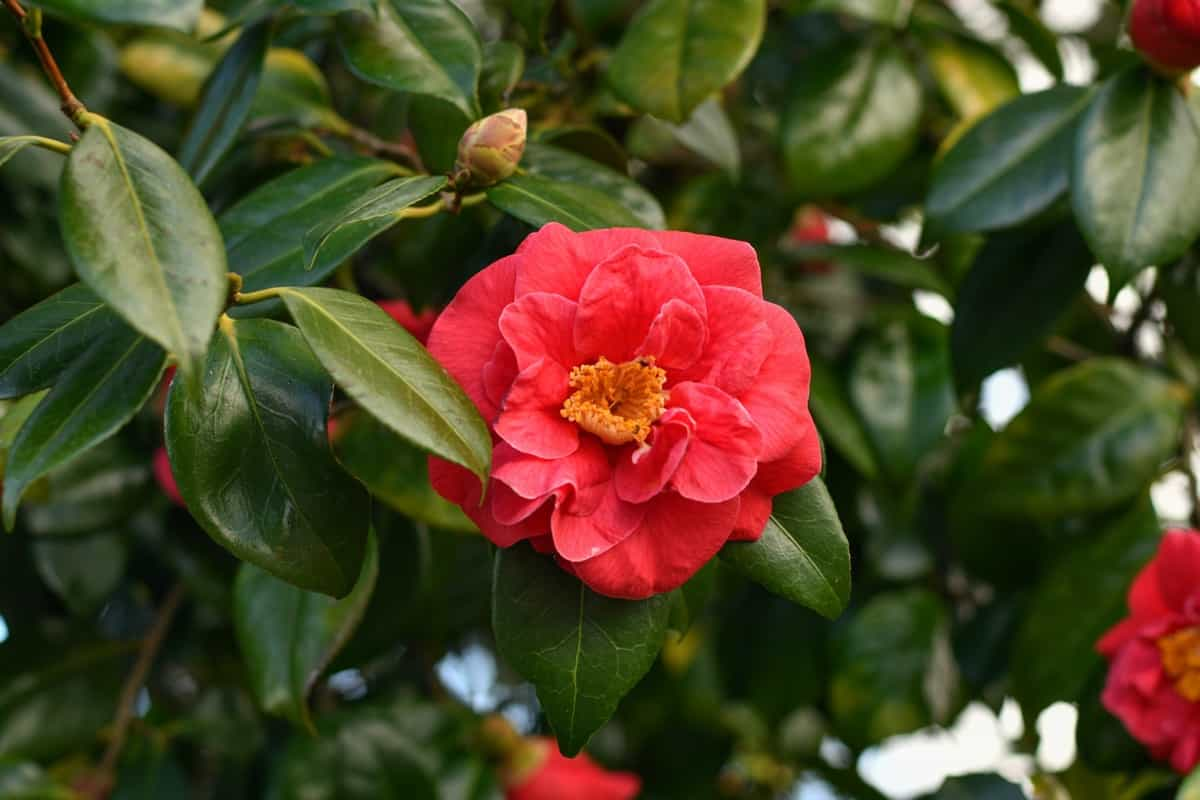
Double Impatiens
Double Impatiens are beautiful flowering plant that comes in various colors. They have a unique double-layered bloom resembling a Rose and are commonly used as an alternative to Roses in floral arrangements. These plants prefer moist, well-drained soil and partial shade. They can be grown indoors and outdoors, making them versatile for any living space. One of the benefits of Double Impatiens is to attract pollinators.
This makes them not only visually appealing but also beneficial for the environment. Regarding care, Double Impatiens require regular watering but should not be overwatered or allowed to sit in standing water. Fertilizing during the growing season every two weeks will also help promote healthy growth. Double Impatiens are a great choice for those looking for a flower with similar beauty to Roses without the maintenance required by traditional Rose bushes.
Gardenia
When it comes to flowers that almost look like Roses, Gardenias are worth mentioning. These delicate flowers have glossy green leaves that add to their overall aesthetic appeal. They require careful attention when growing since they need specific soil conditions and regular pruning to thrive. Despite the challenges of growing Gardenias, many people find these stunning blooms worthwhile. Whether using them in a bouquet or simply enjoying them in your garden, Gardenias will surely make a lasting impression with their beauty and fragrance.
Peony
Peonies are the popular flower that almost looks like Roses. They have large, fluffy blooms in various colors, including pink, red, white, and yellow. These flowers bloom in late spring to early summer and can be found in gardens worldwide. Their beauty continues to captivate people around the world year after year.
In case you missed it: Expert Tips to Grow Fuller and Bushier Rosemary
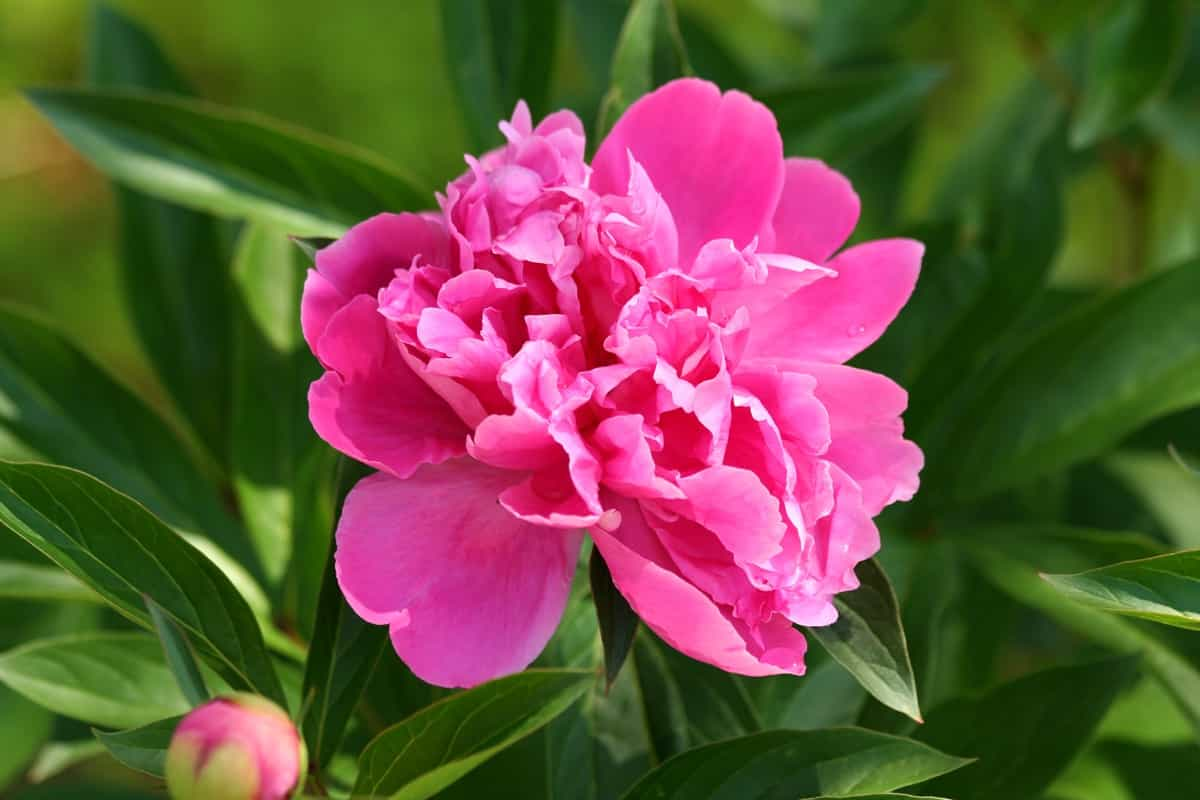
Dahlia
Dahlia flowers almost resemble Roses due to their full petals, but they have a unique charm. Dahlia comes in various hues, such as pink, orange, red, yellow, purple, and white. They bloom during summer or early autumn, depending on the variety. One of the reasons why Dahlia is a popular choice among gardeners is its low-maintenance nature. Once planted in well-draining soil with access to sunlight and watered regularly until established, this plant thrives beautifully without much fuss.
Aside from their ornamental value for gardens and landscapes, Dahlias also offer nectar for bees and other pollinators, making them great for biodiversity conservation efforts. Dahlias are excellent plants that add beauty to any garden or landscape design while maintaining easy care requirements throughout their growth cycle.
Poppy
The Poppy is a stunning flower in vibrant red, pink, orange, and yellow shades. It almost looks like a Rose with its large petals and beautiful shape. The delicate Poppy has long stems holding up several blooms at once. The flowers are cup-shaped with crinkly-textured petals, giving them an interesting texture when touched or looked upon closely.
This annual plant thrives in full sun but can tolerate partial shade too. They prefer well-drained soil and moderate water to grow healthy-looking plants with tons of flowers all season. Poppies are fascinating flowers that almost look like Roses but hold their charm. From their historical significance to their striking appearance, these blooms stand out among other floral species.
Desert Rose
Desert Rose is one of the most unique flowering plants out there. One thing that makes Desert Rose so interesting is it stores water in its thick trunk and branches. This allows it to survive in extremely dry conditions where other plants wilt and die. The flowers of the Desert Rose are also quite stunning.
Each flower has five petals that are arranged like a starburst pattern. Despite being an exotic plant with unique features, growing Desert Roses can be challenging for beginners due to their specific needs regarding watering frequency or sunlight exposure requirements. These beautiful succulents will make great additions to any garden or indoor collection.
Anemone
Growing Anemones requires patience as they need specific growing conditions like well-drained soil with consistent moisture. They may need extra care to keep them healthy, especially during hot weather when they wilt easily. The sight of its delicate petals swaying in the breeze is truly a sight to behold making it a popular choice among gardeners who want to add color and life to their gardens.
In case you missed it: Brilliant Ways to Propagate Roses from Cuttings
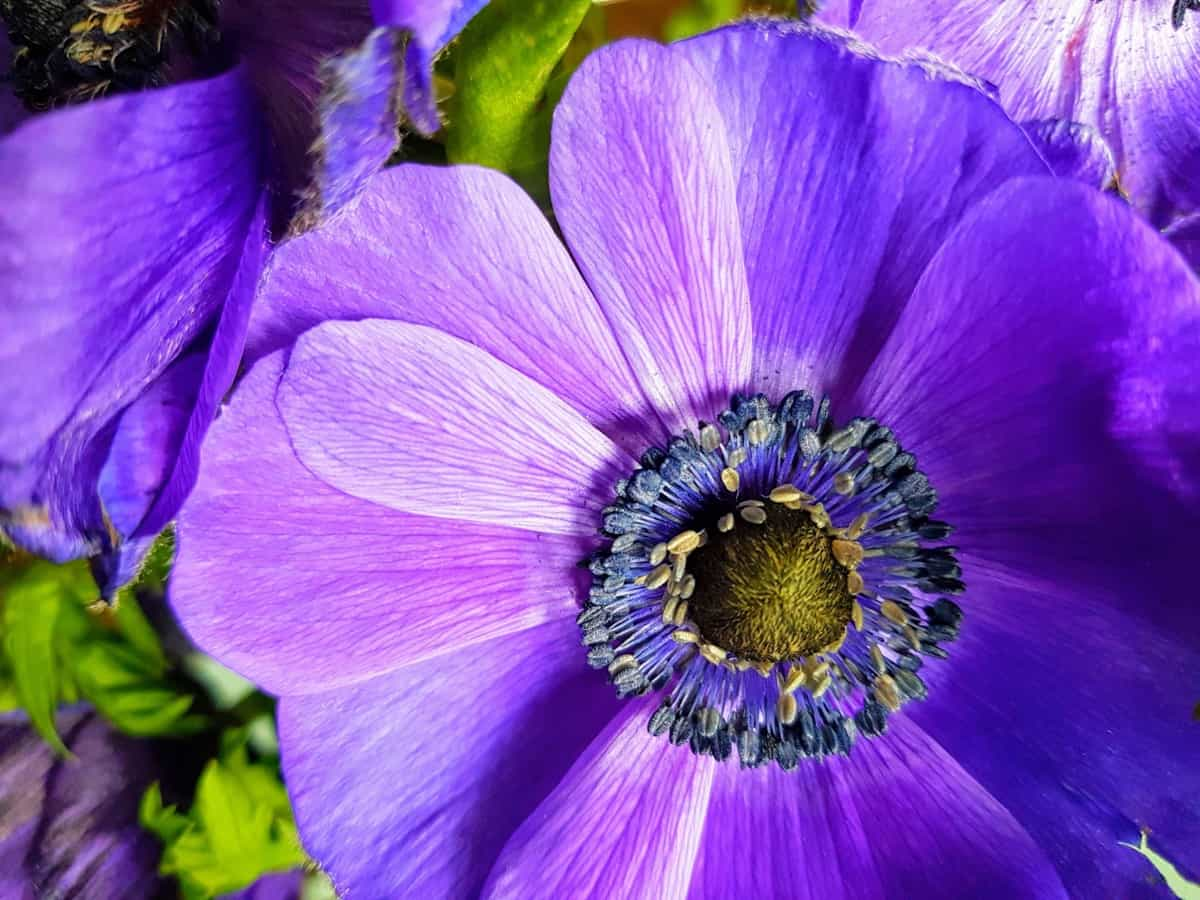
Lisianthus
Lisianthus is a beautiful flower that almost resembles Roses. This stunning flower comes in various colors: pink, white, lavender, and purple. Its petals are ruffled and can be single or double-layered, creating an elegant look. Not only is Lisianthus aesthetically pleasing, but it also holds up well in bouquets and arrangements, with a long vase life of 10-14 days, with proper care.
Lisianthus blooms during late spring through early fall, making it a perfect addition to seasonal arrangements. Whether you’re looking for soft pastels or bold hues, Lisianthus offers versatility to your floral designs allowing you to create breathtaking palettes that will leave lasting impressions on all who see them.
Moss Rose
Moss Rose is a drought-resistant annual flower that can easily be grown in containers or hanging baskets. The plant has succulent leaves and produces vibrant red, pink, yellow, and white flowers. One of the unique features of Moss Rose is its ability to bloom all summer. Another great thing about Moss Roses is they are low-maintenance plants. They don’t require much water or fertilizer and can thrive in hot and dry conditions, making them perfect for areas with little rainfall.
Carnation
Carnation is a beautiful flower that is available in many colors. This has been cultivated worldwide for its beauty and fragrance. Carnations have ruffled petals with jagged edges, which gives them a unique look. The most common colors of carnations are pink, red, white, and yellow.
In case you missed it: How to Grow Rosemary from Seed to Harvest: Check How this Guide Helps Beginners

However, there are also bi-colored carnations that combine two or more colors in one bloom. Apart from being used as decorative flowers at home or events such as weddings or funerals, they can also be used in perfumes due to their sweet aroma. Carnation is an elegant flower with different meanings attributed to each color. Its enchanting scent makes it suitable not only for decoration purposes but perfume production too.
Double Anemone
Double Anemone is a stunning flowering plant that blooms in late summer and early fall. It has large, double flowers resembling Roses with their petal layers. The petals come in various colors, such as white, pink, and purple. They are perfect for adding height and dimension to your garden beds or borders. One great thing about Double Anemones is that they require very little maintenance once established. They need partial shade but can tolerate full sun with enough moisture. They also attract butterflies and pollinators, making them an excellent choice for wildlife-friendly gardens.
Dianthus
The flowers bloom in various colors, including pink, red, white, and purple. One of the most striking features of dianthus is its spicy fragrance. The scent varies depending on the cultivar but typically has a sweet or clove-like aroma. This makes it an ideal flower for cutting and placing vases around your home. Dianthus plants are easy to grow and maintain, making them popular among gardeners. They thrive in well-draining soil under full sun exposure but can also tolerate some shade during hot afternoons.
Begonia
Begonias are a popular flowering plant in many varieties, colors, and sizes. While they may not look exactly like Roses, some begonia flowers have similar petals and bloom shapes. These begonias have layers of petals that create a bulbous shape reminiscent of a Rose. They are available in shades ranging from white to deep pink and red. These plants produce large blooms with ruffled edges that resemble camellia flowers but also share similarities with Roses.
In case you missed it: 18 Common Rose Plant Problems: How to Fix Them, Solutions, and Treatment
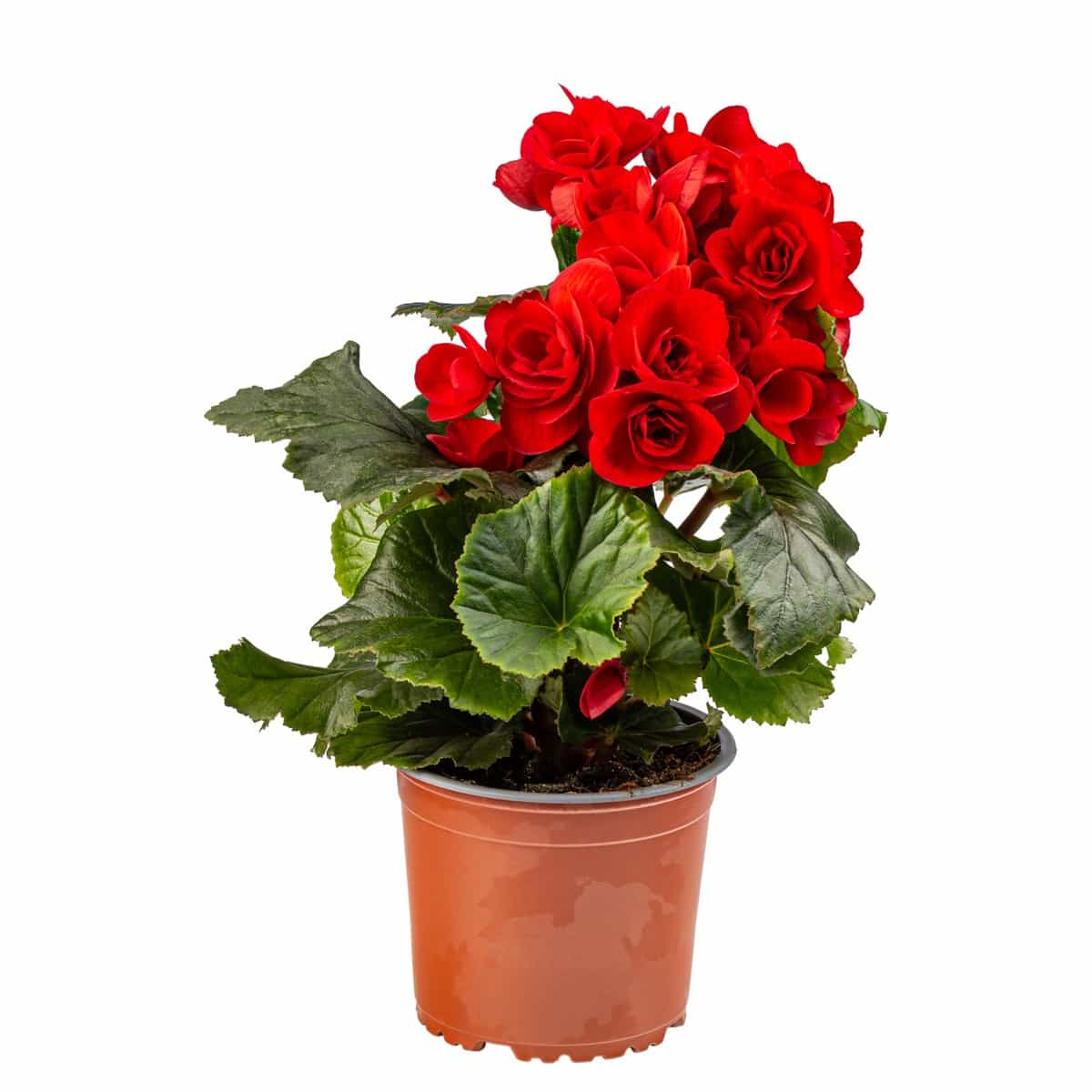
In addition to their visual appeal, begonias are easy to care for and make great indoor or outdoor plants depending on the species. With proper watering and sunlight exposure, these beauties can add charm to any garden or home decor. While they may not be true Roses, begonias offer an attractive alternative for those looking for something slightly different yet equally stunning.
Tulip
Tulips are popular in various colors, including red, pink, yellow, and white. They are spring-blooming bulbs that have cup-shaped flowers with three petals and three sepals. Tulips can be found worldwide and remain a beloved flower for gardens and floral arrangements. Their bright colors and elegant shape make them perfect for adding color to any space. Whether planted outdoors or in a vase indoors, tulips will surely add charm and whimsy to any setting.
Buttercup
These cheerful and bright yellow blooms have a unique charm. These hardy plants prefer full sun but also do well in partial shade. In addition to their beauty and symbolism, some buttercup species have medicinal properties. While they may not look exactly like Roses, Buttercups deserve recognition for their unique appeal.
In case you missed it: How to Prepare the Soil for Rose Plants: Best Soil Mix, pH, Compost, and Recipe
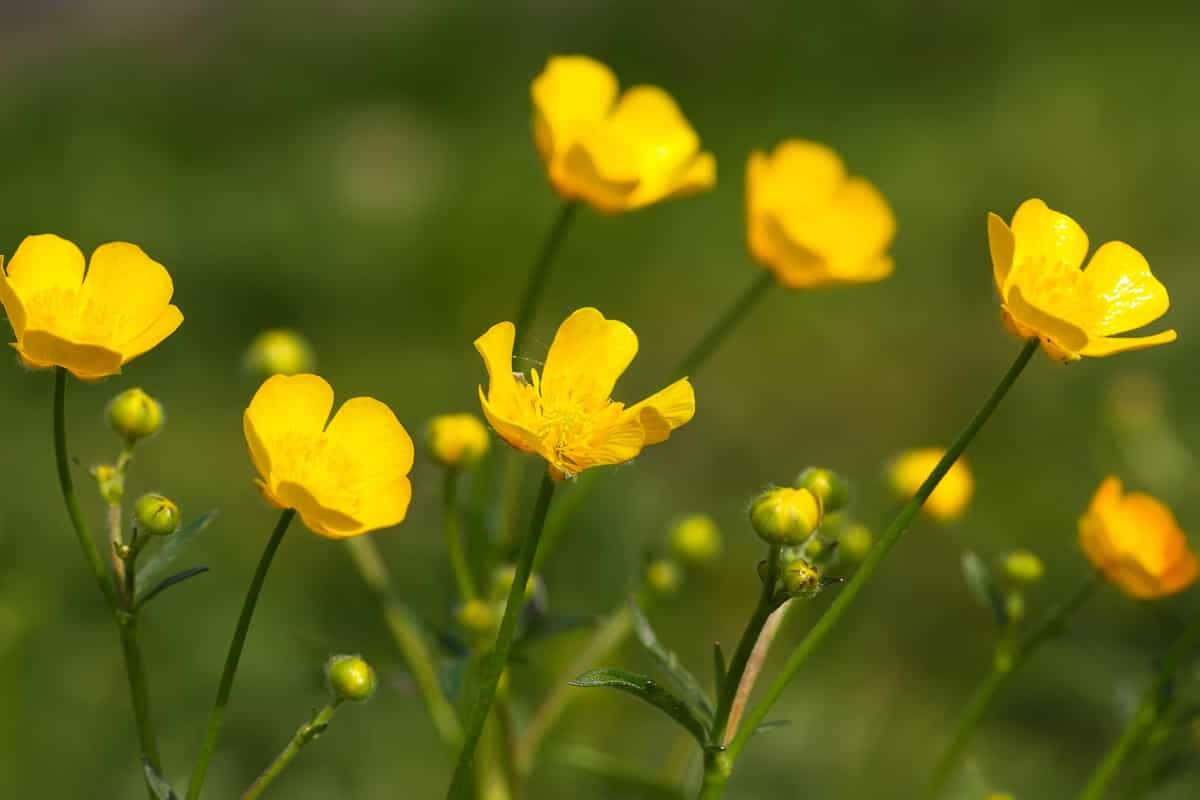
Conclusion
While Roses are undoubtedly stunning flowers that have been cherished for centuries, they can be challenging to cultivate. However, several alternative blooms that almost look like Roses but require less effort and care are available. Additionally, these flowers have benefited from enhancing your garden’s aesthetics to brighten your home decor or add color to your bridal bouquet.
Moreover, it is essential to note that caring for these Rose-like flowers may differ slightly based on their species. Always research before planting them in your garden or bringing them indoors. Just remember to take care when planting and caring for your chosen flower. With proper attention and effort, you can enjoy the beauty of these Rose-like blooms all season long.
- Where to Place Indoor Plants in Your Home
- How to Grow Tomatoes Organically at Home: A Comprehensive Guide
- Organic Gardening on a Budget: Low-Cost Methods and Materials
- Gongura Seed Germination and Planting Methods
- Cabbage Seed Germination and Selection
- Broccoli Seed Germination and Selection
- Asparagus Seed Germination and Variety Selection
- Seasonal Flower Gardening: Best Practices for Spring, Summer, Fall, and Winter
- How to Grow Hibiscus from Flower
- Plantation Ideas for Home Decoration: A Beginners Guide
- Flower Garden Designs and Layouts for Beginners
- Planting and Spacing Techniques in Papaya: A Beginner’s Guide
- Growing Gold: Essential Techniques for Planting Pineapples
- How to Make Kalanchoe Plant Bushy: Home Remedies and Solutions
- 11 Reasons Why Your Gardenia is Not Blooming: Home Remedies and Solutions
- Eco Elegance: The Guide to Designing a Drought-Tolerant Landscape
- Gardening on a Slope: Strategies for Hillside Landscaping
- Nourish and Flourish: Top Organic Mulches for Thriving House Plants
- Everything You Want to Know about Indian Mogra Flower: Discover Uses and Growing
- Green Thumb Success: Expert Tips for Cultivating Greenhouse Pumpkins All Year Round
- Maximize Growth & Flavor: The Ultimate Guide to Companion Planting in Herb Gardens
- How to Control Rhododendron Problems Naturally: Home Remedies and Organic Ways to Fix Them
- Natural Magic: The Remarkable Benefits of Cinnamon for Plants
- Best Steps to Revive Dying Tulip with Natural and Organic Treatment
- 10 Reasons Why Your Angel Trumpet is Not Blooming: Remedies and Treatment
- How to Fix Periwinkle Leaf and Flower-Related Problems: Natural Remedies and Solutions
- How to Fix Zinnias Leaf and Flower Problems: Discover Natural and Home Remedies
- Organic Steps to Induce Lemon Tree Flowers: A Comprehensive Guide
- Bloom Booster: Crafting the Perfect Homemade Bougainvillea Fertilizer
- Optimizing Growth: A Guide to Applying NPK Fertilizer for Potted Plants
- 10 Best Homemade Fertilizers for Rubber Plant: DIY Recipes and Application Method
- How to Boost Female Pumpkin Flowers: Effective Steps for More Flowers and High Yields
- Transform Your Indoor Garden: Top Benefits of Pink Salt for Houseplants
- 10 Best Homemade Fertilizers for Peacock Plants (Calathea): Easy DIY Guide
- Unlock Blooms: 9 Reasons Why Your Potted Chrysanthemum is Not Blooming
- 8 Reasons Why Your Potted Hibiscus is Not Blooming: Fix it with Simple Solutions